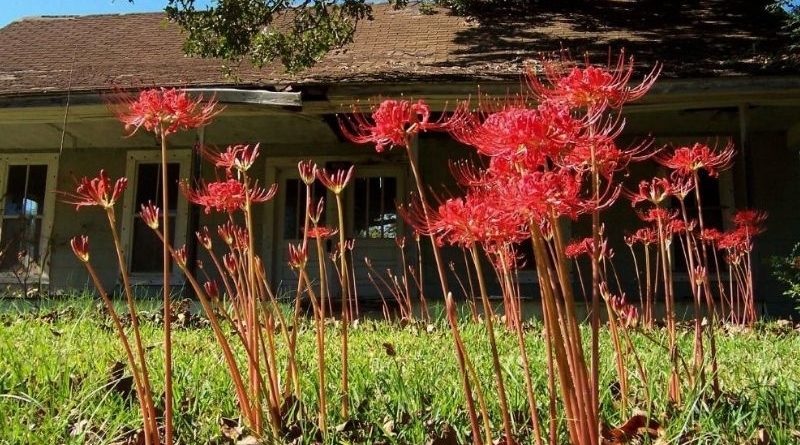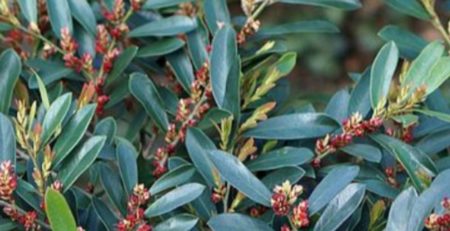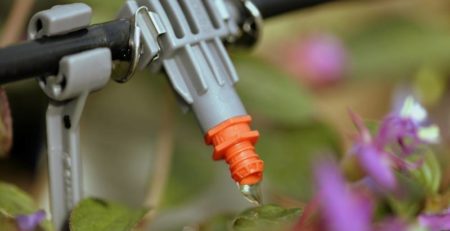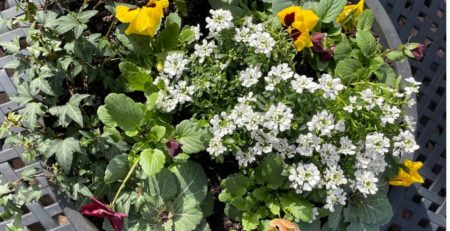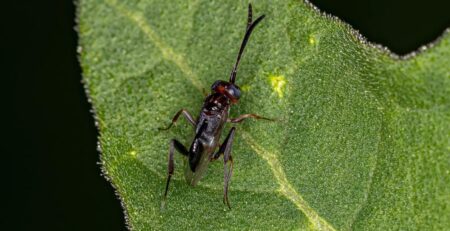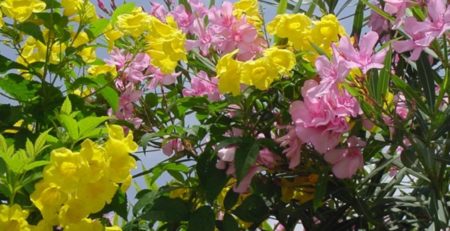The Power of Passalong Plants
Long before there was a North Haven Gardens, before every big box store offered identical Early Girl tomato plants, and decades before gardeners could have a Stark Brothers apple tree delivered next-day to their doorstep, there were passalong plants.
Passalong plants are those we acquire when another gardener shares a start, cutting, bulb, or seed. The passalong plant tradition is especially popular in southern states, having gained strength during the Civil War when a shipping embargo limited access to usual sources. The tradition is also strong in Texas. Early Texas settlers were spread far and wide so they relied on cuttings and seeds from family and friends for their gardening needs.
Jen Monteleone knows first-hand the power of passalong plants among early immigrants who brought beloved plants with them to the U.S. from the old country. A fig tree in Jen’s yard in Arizona can be traced directly to Samo, Italy, where it grew more than a century ago.
Jen’s tree is not merely similar to the one that generations of the Monteleone family have enjoyed, it is a direct descendant of the cutting that Jen’s great-grandmother Angeline brought to Bronx, NY, in the early 1900s. “We have had cuttings from this tree growing in the yard at every house my family has owned,” said Jen. “Over the years, through home sales and the passing of the older generation, we’ve ended up with only one tree left.” Passalongs to the rescue.
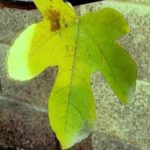
Realizing the risk to her family’s sole surviving tree, Jen recently sent out a clarion call to fig-growers. She asked experienced fig propagators to root cuttings taken from this beloved family heirloom. The future looks bright for the tree, an unknown variety that Jen has named Angeline’s Italian Black, after her great-grandmother, of course.
Three people from around the U.S. are currently rooting cuttings of Angeline’s Italian Black. Everybody wins in this surrogacy arrangement–Jen gets the first successfully rooted cutting and the foster parents can keep any extras. And that’s an example of how some treasures get passed down, around, and back again.
A small potted cactus matters a great deal to Liz Moyer, a Denton County Master Gardener who lives in Corinth. “Before my grandfather’s farm near East Sweden sold, I dug up some barrel cacti,” she recalls. She divided the cacti into 15 pots and passed them along to her children and her sister’s children. “It was all we had left of the land that our family had owned since 1889,” said Liz. “Sometimes, a passalong plant is the only thing you have left of someone or something you held dear.”
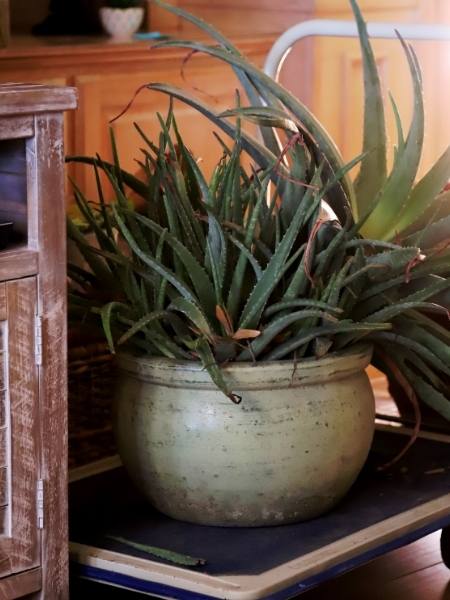
Passalong plants are often those that are easily propagated. Paula Spletter, Dallas County Master Gardener, knows a thing or two about propagating and sharing plants. Paula has shared hundreds of succulents that she propagated in the greenhouse at her home in Carrollton. “I love sharing succulents because they are so easy,” said Paula.
Pointing to a large aloe plant that is overwintering in her living room, Paula said, “That pot is exploding.” She explains that she will dump the pot on its side, pull out the soil ball, then separate and pot all the babies. Viola! She’ll have a dozen or so plants to share with friends.
While she worked at North Haven Gardens, Paula learned how attached some people can become to a plant. She recalled how on an almost monthly basis a customer would bring in a sad-looking plant, desperate for a horticultural intervention. She would clean them up, add a bit of fertilizer, and send a hopeful customer home.
Popular garden writer and broadcaster Felder Rushing travels the country in his bright green Ford F-150, one that carries a garden in its bed. In his travels across Texas, Felder said, “I can’t resist exploring small towns and stopping by old cemeteries and master gardener demo gardens, looking for what grows in your, um, rather harsh climate without a lot of artificial life support.” Felder eloquently describes the plants he finds in the Lone Star State: “There are lots to find, from garden-friendly native plants (of course!) to ancient roses, bulbs, perennials, and shrubs.
Many are somewhat hard to find commercially, but crop up over and over in unexpected garden spots, indicating an undercurrent of under- and over-the-fence sharing–an unsung web of humanity, woven with shared plants and their delightfully-descriptive folk names lost in translation.”
Felder co-wrote the book on passalong plants, aptly titled Passalong Plants, and has observed that they usually share three characteristics: 1) They possess multiple values such as beauty, good pollinators, fragrant, antique, native, and exceptional flavor, 2) anyone can grow them, and 3) they are easy to share. As for durability, Felder elaborates, “They’re almost neglectfully easy to grow in just plain d-i-r-t with little or no watering, pruning, spraying, or the like.”
‘”Not everyone has a green thumb,” Felder said. “Yet these plants are seen across Texas even in cemeteries where ‘pushing up daisies’ is more than just a metaphor.”
For Mariana Greene, former garden editor of the Dallas Morning News, sharing plants was sometimes a mother/daughter adventure. She recalls how in the early ’80s she drove back and forth across Dallas conducting story interviews for her job as a journalist. When Mariana saw a bungalow was being razed in Old Oak Cliff or Old East Dallas, she and her mother scavenged the lot for perennials, bulbs, and shrubs or took cuttings. “Mother took cuttings; she could root anything,” said Mariana.
Drawing a family tree for many passalong plants is just about impossible. For example, the Byzantine gladiolas that grow in Mariana’s yard came from a neighbor. That neighbor transplanted them from her mother’s garden. The neighbor also shared them with another neighbor. “So handfuls of the glads have been passed along on my block for three decades,” Mariana said. She learned from Jimmy Turner, former head of horticulture at the Dallas Arboretum, that the Byzantine gladiolas for sale in national plant catalogues are not true. Mariana’s byz glads, on the other hand, are the real deal.
Because they are relatively easy to propagate from cuttings or to grow from the seeds produced by their rose hips, roses have been popular passalong plants. A remarkable passalong plant is the rose ‘Peggy Martin’ according to Kit Flynn, a master gardener from Durham, North Carolina.
Kit shared how Peggy Martin is a famous rosarian who lived outside New Orleans when Hurricane Katrina hit. The rose was a nameless one given to Peggy by either her hairdresser or sister-in-law. Peggy returned to her garden two weeks after the hurricane. The unnamed rose was one of just two plants that survived the toxic stew. The other survivor, also a popular passalong plant, was a crinum. Peggy Martin designated the rose as a symbol to all those who had survived the storm, naming her Peggy Martin, or the Katrina rose.
Unlike old garden roses, not all plants make suitable passalongs. ”Years ago someone gave me a Chinese tallow,” recalls Greg Grant, Smith County extension agent with Texas A&M AgriLife Extension in Tyler. “It had lovely fall color, but then I learned how invasive it is,” said Greg. “Fortunately, the tree later froze and died.”

‘So be careful when people pass along something to you,” cautions Greg. “Check it out before you plant it. Mexican petunias can choke out other plants, but they don’t take over an ecosystem and spread ad nauseam like Chinese privets do.”
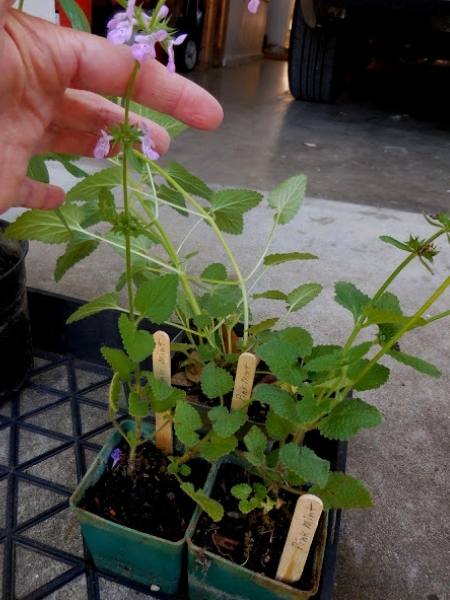
Succulents, cacti, and most native plants make ideal pass-alongs, advises Sheryl Smith-Rodgers. Sheryl is a Texas Master Naturalist whose yard in Blanco is filled with many passalong plants, including Texas natives.
Her yard (front and back) is certified as a Texas Wildscape and a Wildlife Habitat Demonstration Site by the Texas Parks and Wildlife Department. Among Sheryl’s favorite passalongs is pink mint (Stachys drummondii), a Texas native that she received from a friend of a friend. Pink mint shares some common traits with other popular pass-alongs. “It reseeds well and comes back every spring,” said Sheryl.
Some flowers are like a time machine for MaryBeth McCown, a Smith County Master Gardener. “When I see a purple iris I’m transported to my childhood home’s flowerbed.” She recalls the vibrant, royal purple bearded Iris from her Aunt Nell’s rhizomes, that were passed on to her mother, and grew tall along the east side of her mother’s house. MaryBeth poignantly sums up the staying power of passalongs: “When we live far away or live in another generation, flowers are tangible connections to friends and loved ones.”

